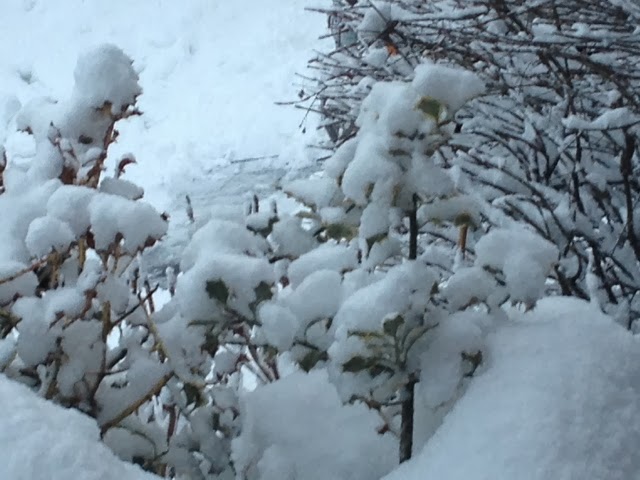The crape myrtle standing among a sea of snow.
The weeping spruce and Japanese maple look like they are covered with marshmallow fluff. Thankfully they have remained strong through this winter.
A variegated holly or a cotton field?
The holly is not only covered with snow, but there are icicles hanging off the leaves in the front. I'll try to dust off some of the snow if it's not too heavy but the ice I will leave alone. Trying to remove that could cause more harm than good.
On the plus side, however, I have been hearing more song birds outside. A true sound of spring. Maybe they know something we don't?






